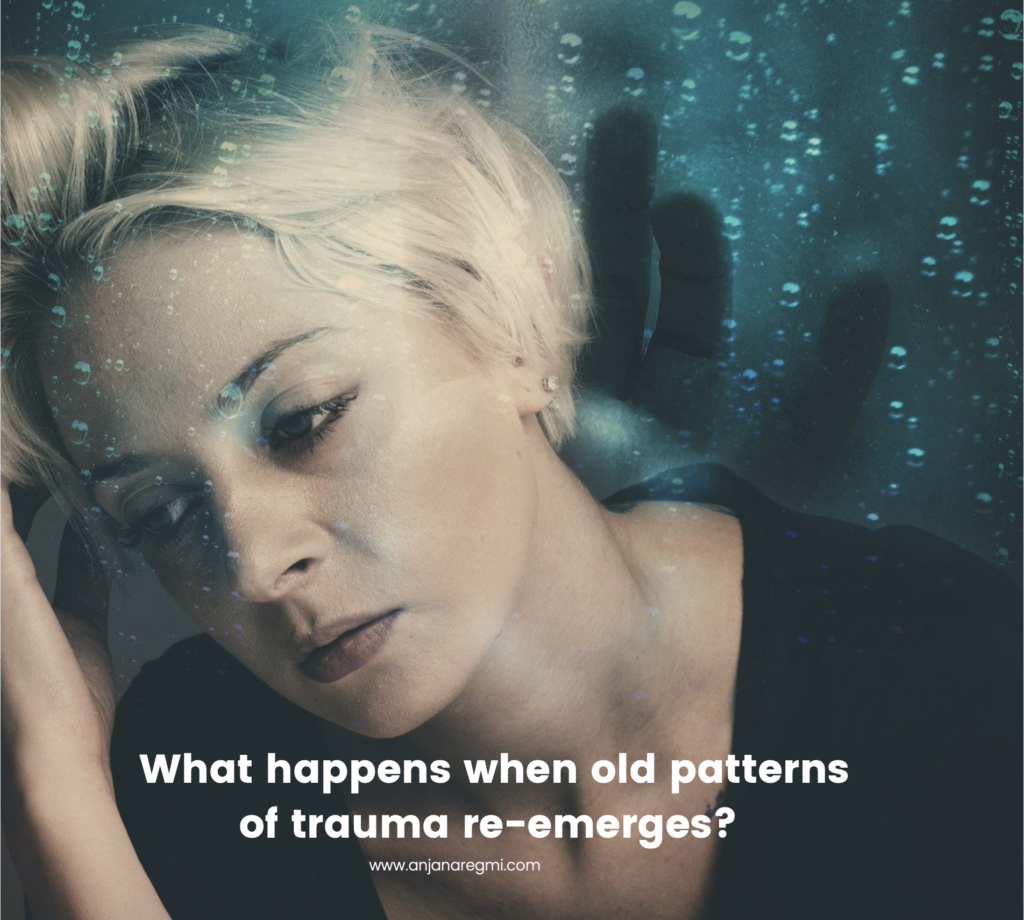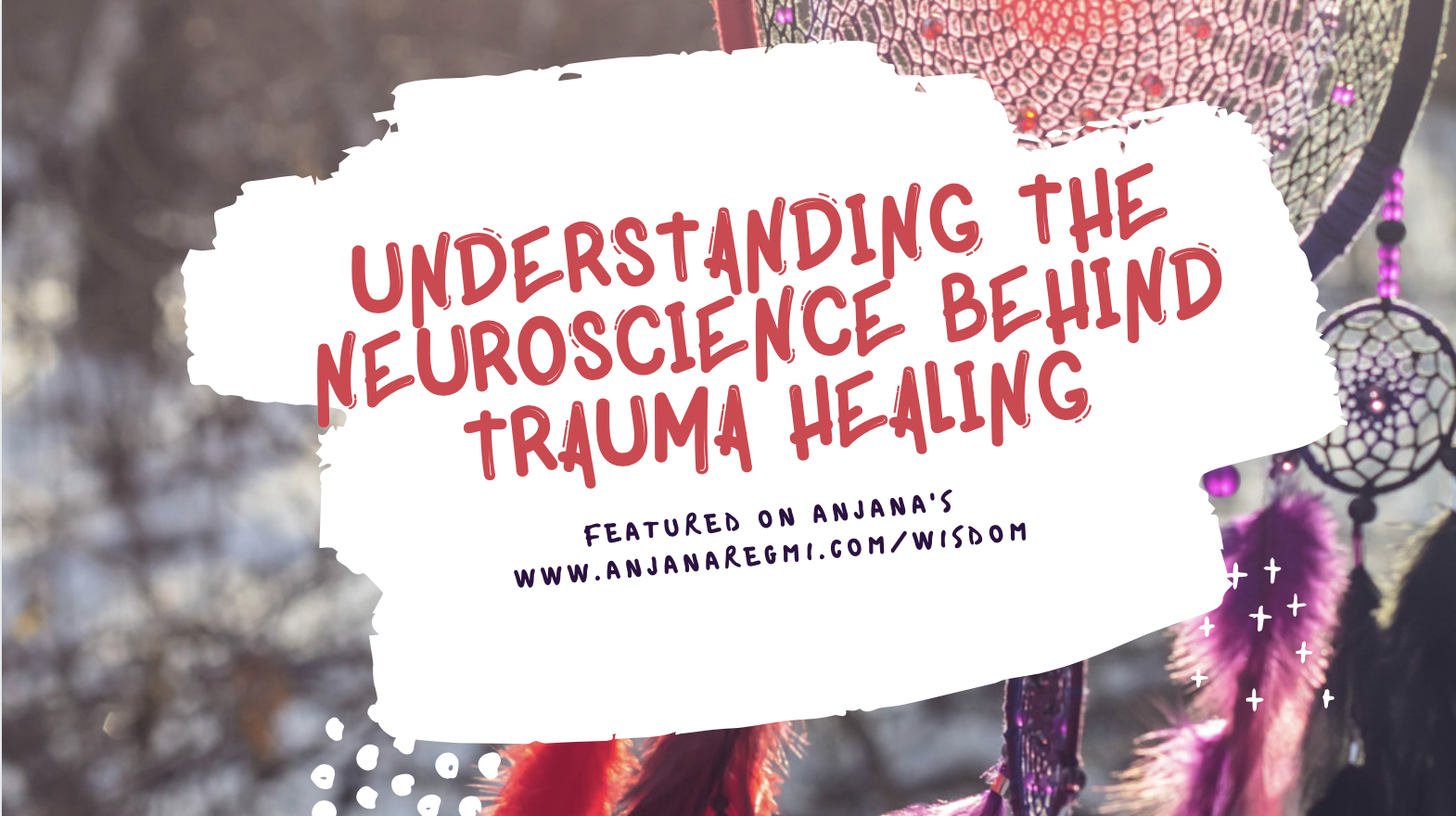Neuroscience is the study of how our brains react to stressful stimuli and fear. By understanding neuroscience, we can better help ourselves as well as others recover from trauma. It is helpful in supporting trauma survivors rewire their brains to cope with stress, fear and other stimuli.
The human brain is wired at birth to respond with fear, stress and anxiety towards stimuli but through the therapeutic process of neuroscientific research we can better understand how this works.
In neuroscience, it’s believed that the brain can rewire itself when exposed to trauma and stress. The various stimuli experienced during these events create neural pathways which are only reinforced with further exposure. Over time, this process results in a reliance on these unhealthy coping mechanisms. This is referred to as an ‘altered neural pathway’.
Trauma healing is more than just about repeating healing processes: it’s about re-learning and rewiring neural pathways. For example, going to a forest or the beach may trigger memories of an assault for some people – that doesn’t mean they’ll never be able to go out into nature again. Instead, they can slowly overcome this by exposing themselves to a greater variety of stimuli.
This also means that it’s easy to inadvertently strengthen unhealthy neural pathways as well. A person who is nervous about travelling by plane might not find the idea of airplanes comforting: their brain may go along with this by establishing a very strong, negative association with them!
What neuroscience has shown us is that it’s possible to rewire unhealthy neural pathways, but only by taking it slow. Travelling on a river boat to start with, then progressing up to canoes and kayaks, before finally attempting cruising would probably work well for the example of someone nervous about travelling by plane. Going at a pace that works for you is important in neuroscience behind trauma healing.
This allows us in therapies, coaching, and counselling professions to help people heal from trauma which leads me to my next point that there are several ways in which neuroscience helps those who have experienced severe mental health implications like PTSD or depression.

The neuroscience behind trauma healing process
Neuroscience is brain science that examines what happens in our brains when we experience trauma, and how the “rewiring” process of healing changes our brain chemistry .
1. Understanding neuroscience and its role in the process of experiencing traumas, as well as looking at how neuroscience changes throughout this experience.
- Understanding neuroscience and its role in recovery. This looks at neuroscience and neural networks, what happens when old patterns re -emerge, and neuroscience and the action of building new neural networks.

What’s happening in our brains when we are experiencing trauma?
When we experience a traumatic event, our brain chemistry changes during this time. Prolonged stress has a negative effect on the hippocampus and amygdala areas of our brains, which is why we feel highly stressed or anxious while the trauma is still being experienced.
When the brain senses danger, it makes us ready for the “fight or flight” response, which floods us with cortisol and adrenaline to help our bodies deal with danger effectively. During this time, there’s an increase in dopamine production as well as a decrease in serotonin levels . When we’re flooded with stress hormones, we’re more likely to feel hypervigilant and on-edge .
After the trauma has passed, our cortisol levels decrease. This can cause us to feel dysphoria (a general state of unease that can manifest as anxiety, depression and emotional numbness), making it difficult for us to focus or find enjoyment in things that used to be pleasurable. In the absence of cortisol, we may have an increase in inflammation and a decrease in serotonin levels . This can contribute to depression or feelings of hopelessness .
Researchers are learning that our brains don’t fully recover from trauma — even after the traumatic event is over. Our old neural pathways stay active, keeping us stuck in a state of heightened arousal and fear. Sometimes these neural pathways can re-emerge after years of dormancy.
What is the role of neuroscience in the trauma recovery process?
One of the explanations for why trauma recovery isn’t as clear cut as we once thought has to do with neuroscience, and how our brains are wired.
Your brain is made up of billions of neurons which are constantly forming new connections with other neurons. These neural networks that form throughout your life help us learn new things and allow you to form memories.
With trauma, neural pathways are formed which tell your body to constantly be in fight or flight mode. If the traumatic event is over, why does this happen?
When you experience a traumatic event, neurons send signals throughout your body and create new connections with other nearby neurons. As neuroscience teaches us, neurons that fire together wire together. This means that when the traumatic event is over, these neurons which form the connection between two events still fire like they did during the traumatic event. These connections become your mind’s normal day-to-day way of coping with things in your environment.
However, neuroscience also teaches us about neuroplasticity: this means that the brain can change throughout a person’s lifetime. As neuroscience explains, the brain is constantly rewiring and re-interpreting your environment (and this is how your brain makes sense of it all). This means that over time, new neurons/new connections are formed between nearby neurons and old ones are pruned away. This is where neuroscience meets psychology — psychology being defined as the study of the mind.

What happens when old patterns of trauma re-emerge?
When someone suffers from a traumatic experience, they are likely to find themselves feeling scared or stressed about certain things, even if they are not aware of why.
In neuroscience, this is known as a trigger – something happening in the environment that triggers memories and emotions connected with past trauma. For instance, someone who has been through a traumatic experience at sea may become anxious whenever they see water. This could be seen as a form of post-traumatic stress.
Every time we go through an emotional event, our brain creates neural networks that determine how we approach similar situations in the future. Neural pathways, i.e. a collection of interconnected neurons and synapses, can be thought of as a mental map laid out in our brain which tells us what to do in response to a certain stimuli. It’s easy to see why neuroscience is such an important area.
According to neuroscience research, trauma leaves a particular pattern in our brains. This is known as neural plasticity – essentially meaning all the ways in which our brains change, physically. This may sound frightening but neuroscience research has led us to understand that our brains can be deconstructed and reconstructed again and again throughout a person’s life.
We learn a lot from repetition. Examples include learning how to walk, talk, ride a bike and gradually we do it with less effort each time. This is because in the brain, neural pathways are created by repetition.
Neurons that fire together wire together (repeatedly firing neurons over time creates strong connections). Neurons that fire apart wire apart (less firing=less connection). That is why it’s important to practice new ways of coping and keep practicing them over time. You’ve probably heard this before, but repetition turns into habits. If you do something actively for a minimum of 21 days, that becomes your habit.
Hence, neuroscience also explains that with time and help from a therapist, people are able to rewire their brain through the use of neurofeedback.
The brain is an extremely complex organ that is responsible for many functions. People have found neuroscience to be a fascinating area of study, particularly in the context of how neuroscience relates to trauma healing.
This post discussed briefly about how neuroscience explains the process of experiencing trauma and during the recovery. It further discussed what happens when old patterns re-emerge.
Trauma is often defined as intense experiences which affect the person’s normal state of being. Trauma can happen at any point in life, and it’s crucial for us to understand the neuroscience behind trauma healing so that we can process the experience with wisdom and patience.
To know more on neuroscience behind trauma recovery, let us start by understanding how to bookmark this website and revisit regularly.
Now, you agree experience is powerful and neuroscience behind trauma healing has shown its impact on our brains, don’t you? The brain can be rewired by repeatedly going through a situation that causes stressful emotions to change the neural network, dissolve associations and build new ones. Hence, it’s crucial for us to understand neuroscience behind trauma recovery, as it helps us comprehend how our brains function.
Conclusion
In this blog post you learned about the role of neuroscience in the process of experiencing traumas and its role in recovery. When someone suffers from a traumatic experience, stress and trauma have a strong influence on our brains. The first part showed how the human mind reacts during a traumatic event while the second covered what happens after when you try to restore your sense of safety by avoiding anything that reminds you of danger.
This neuroscience behind trauma healing gives us an idea of how we can process the experience with wisdom and patience. The neuroscience of trauma recovery is fascinating, in that it shows how neural networks are created through repetition. You learned, according to neuroscience research, when a person experiences a deeply distressing or traumatic event, the brain rewires itself to cope with stress and fear. This is an organic process, but it’s also one we can influence through therapy.
When people experience trauma or major life changes and are unable to adapt to them, old patterns keep re-emerging. This is where neuroscience helps people understand that the brain has a plasticity to it, which means it can alter itself continuously throughout one’s life in response to experiences or events. Old patterns and behaviours can be undone by changing how neural networks are formed. This neuroscience behind trauma healing shows that processes like learning new skills, confronting fears, and active reflection can reform neural pathways and create new ones.
Before you go, one take away for you in one sentence – “The brain can be re-wired through neuroscience.”
Let me know if I can be of any service and I would love to talk with you about how we may support one another as partners in this journey towards wellness!



